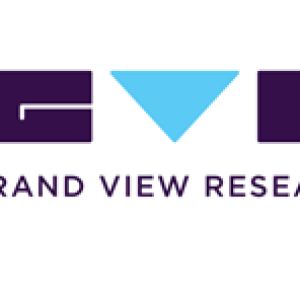Beverage Packaging market COVID-19 Impact, Trends & Business Statistics By 2025Posted by Mrudula Anil Karmarkar on November 8th, 2023 San Francisco, 08 November 2023: The ReportBeverage Packaging Market Size, Share & Trends Analysis Report By Product (Can, Bottle & Jars, Pouch, Carton), By Material (Plastic, Glass, Metal), By Application (Alcoholic, Non-alcoholic), And Segment Forecasts, 2018 - 2025 The global beverage packaging market size is expected to reach USD 173.26 billion by 2025, according to a new report by Grand View Research, Inc., progressing at a CAGR of 4.5% during the forecast period. Increasing consumption of beverages coupled with surging demand for convenient and sustainable packaging solutions is estimated to propel the market. The global beverage packaging market is witnessing a huge demand from alcoholic as well as non-alcoholic beverage segments in emerging economies. The overall market is also observing growth on account of soaring demand for functional drinks. Rapid urbanization and widening base of middle-class population in developing economies are resulting in lifestyles changes, including rise in the demand for beverages. Bottle & jars were the largest product segment in 2016. However, carton is anticipated to witness the most promising growth over the forecast period owing to burgeoning adoption of active packaging. It helps in extending shelf life of products by utilizing several systems such as moisture absorbers, oxygen scavengers, antioxidants, and antimicrobial agents. It can also facilitate easier processing as well as consumption of the beverage. Bottle & jars are typically made up of glass and plastic. The demand for plastic bottles is directly supplemented by rising consumption of bottled drinking water and carbonated soft drinks. High-density polyethylene (HDPE) and polyethylene terephthalate (PET) are among the major grades of plastics utilized to manufacture plastic bottles. Phenomenal growth in the single-serve water packaging segment is likely to push the demand for plastic bottles during the forecast period. Changing consumer preferences are resulting in an increased utility of packaging materials to enhance strength, aroma retention, heat insulation, sealing, and barrier against moisture. Soaring demand for small packs is providing a strong push to the demand for flexible bags and pouches. The incorporation of active and intelligent systems in beverage packaging is also projected to help the market gain remarkable momentum. The packaging industry is adopting intelligent systems on an increasing scale to provide maximum security as well as to maintain the nutritional content of beverages. Request sample report of Beverage Packaging Market@https://www.grandviewresearch.com/industry-analysis/beverage-packaging-market/request/rs1 Growing demand for premium products, aided by rising disposable income, is positively influencing the demand for alcoholic beverage consumption. In countries such as Belarus, Moldova, Lithuania, Russia, Romania, the U.K., Ukraine, Andorra, Hungary, Slovakia, and Portugal, cultural as well as traditional aspects play a vital role in supplementing the demand for alcohol. Meanwhile, in emerging nations such as China and India, the demand is witnessing a rapid pace. China, the U.S., Brazil, Germany, Russia, Mexico, Japan, the U.K., and Poland are among the major beer-producing countries in the world. Further Key Findings from the Report Suggest:
Some bioplastics, such as PLA and PHA, are biodegradable, while bio-PE and bio-PET are not. However, they are all biosourced and break down faster than petroleum-based plastics. They are preferred over conventional plastics as they offer reduced carbon footprint. A key driver for the growth of the market is the rising focus on environmental sustainability, which is poised to result in reduced consumption of petroleum-based products and spiraling demand for biobased alternatives. Cartons are anticipated to witness the most promising growth during the forecast period. Cartons are primarily made up of paperboard along with a thin layer of aluminum and plastic, which helps in preserving beverages for a substantial period. Cartons are witnessing a surge in demand for packaging of milk, juices, and other non-alcoholic beverages, as they preserve the product without the need of adding a large number of preservatives. This packaging enables perishable beverages to be transported to those regions, which lack refrigerating facilities as well as other preservation methods. Report Scope
Key participants include Bemis Company, Inc..; Sonoco Products Company; Saint-Gobain S.A; Mondi plc; Amcor Ltd; Alcoa Corporation; Reynolds Group Holdings Limited; Crown Holdings Inc.; and others. Intense competition coupled with spiraling demand from end-user industries has motivated high strength steel manufacturers in implementing growth strategies to maintain their brand position.
Like it? Share it!More by this author |


